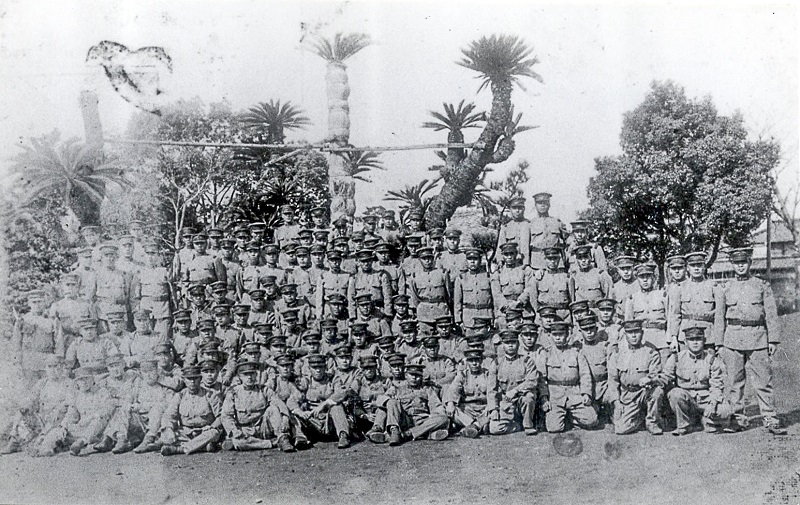On March 5, 1898, Imperial Decree No. 36 promulgated the Ordinance of the Okinawa Garrison Headquarter. The headquarter functioned solely as a conscription office and no soldiers were deployed on Okinawa itself. On April 12, five officials assumed office under Commandant Shimoe Takashi and the conscription office was launched on April 15. Befor teaching karate at the normal school and elsewhere, after having been transferred from the Army’s 6th Division 13th Infantry Regiment in Kumamoto to the Okinawa Garrison Headquarter, karate master Yabu Kentsū was responsible during the 1st to the 3rd examination of Okinawan conscripts. Leter, Yabu Kentsū was responsible to teach karate at the Prefectural Normal School and it was his military background that provided him this job.
Okinawan conscripts at the time were assigned to the Army 46th Regiment (Ōmura), Army 6th Division 13th Regiment (Kumamoto), Army 23rd Regiment (Kumamoto), Army 45th Regiment (Kagoshima), Army 12th Division 14th Regiment (Kokura), Army 24th Regiment (Fukuoka), 47th Regiment (Kokura), 48th Regiment (Kurume), and the Sasebo Navy Base.
The story of the many Okinawan soldiers who served in every war from 1894 to 1945 is not well know today. There are some newspaper articles such as that of Infantry Master Sergeant Yagi in 1899. Yagi, just like karate pioneers Yabu, Hanashiro and others before him, entered the military academy for NCO of the IJA (Rikugun Kyōdōdan) in 1892, and graduated in 1894. As a subordinate of Major General Ōshima Yoshimasa, he fought “fiercely in various battles and achieved military merit.” During his welcome party held in Tomari, karate was performed and “following the entertainment, Master Sergeant Yagi got up himself and loudly sang a war song of a great victory and performed a courageous dance with a loud roar.”
In contemporary karate circles the connection between militarism, nationalism, and Okinawa karate by Okinawans at the time is an extremely uncomfortable topic and avoided like the plague, particularly because postwar karate follows a victim narrative, a trend that led to today’s positioning of karate as “heiwa no bu” or “martial art of peace,” which is a commendable ideal, yet historically difficult to maintain particularly for Okinawa, less for Japan itself. It’s a huge problem for Okinawa karate, which likes to stage itself as a culture and applies as a intangible heritage with the UNESCO. i wonder how, or rather if, ever, the Okinawan karate circles will tackle this issue academically, instead of sidestepping it.
How Okinawans including karate persons also looked like we see in this photo of the Association of Okinawan Persons of the 46th Infantry Regiment during military drill. There are about 100 of them in this regiment only.
The 46th Infantry Regiment was established in 1896 as one of the regiments of the Imperial Japanese Army stationed in Ōmura, Kyūshū. The regiment served in the Russo-Japanese War (1904-05) and in 1914 participated in the Siege of Tsingtao. In 1932, it was dispatched for the January 28 Incident (Shanghai Incident). In April 1936 it was stationed in Boli County, Sanjiang Province, Manchuria, to engage in counterinsurgency warfare. April 1937 it was moved to Linkou County and on June 1938 it moved to Shimenzi for relocation. It was further moved a few times in China until in November 1944 the regiment was moved to Taiwan, were it guarded Kaohsiung. In 1945 it was transferred to Okayama. In August 1945, the war ended.
© 2023, Andreas Quast. All rights reserved.

